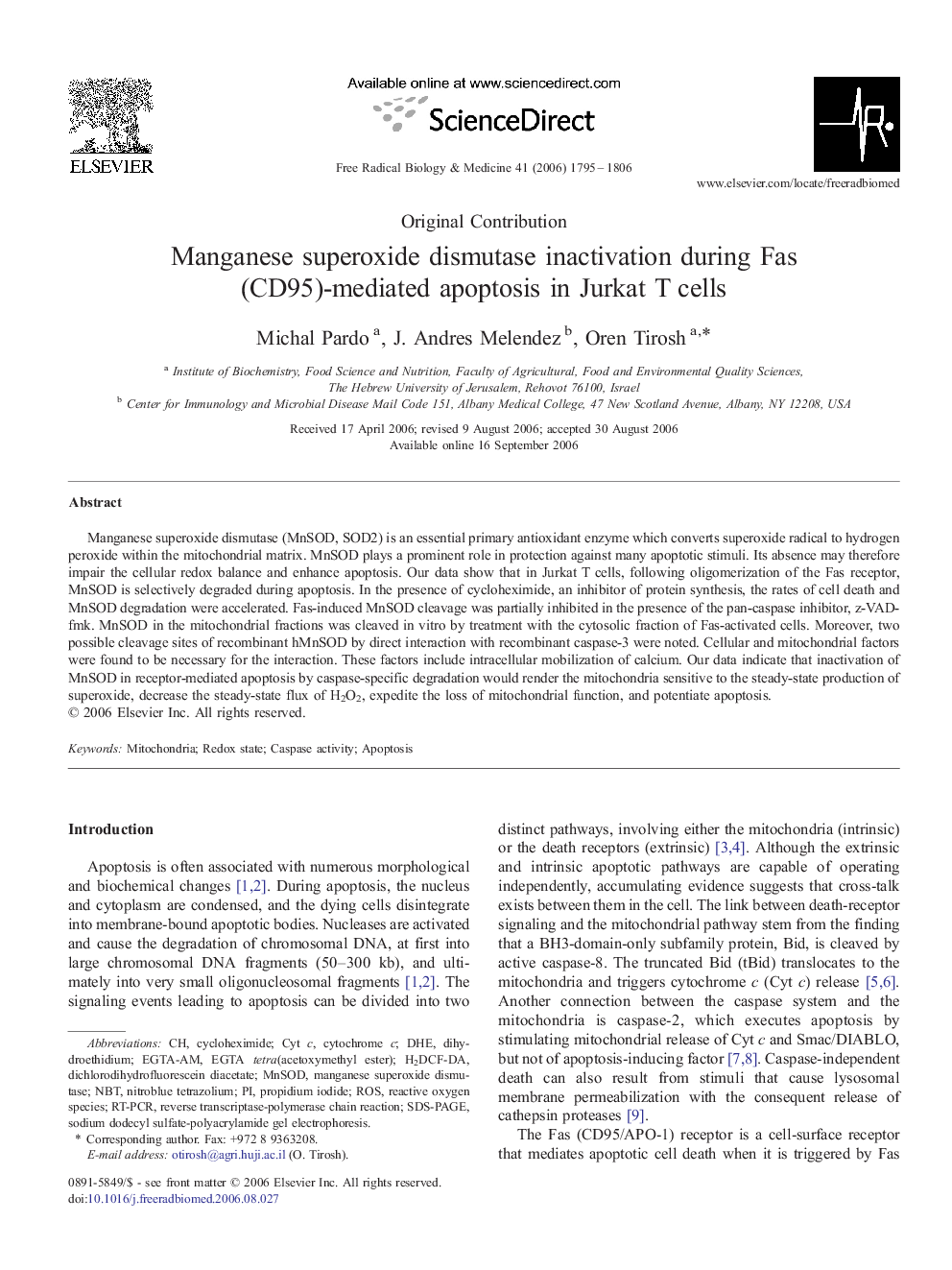| Article ID | Journal | Published Year | Pages | File Type |
|---|---|---|---|---|
| 1911945 | Free Radical Biology and Medicine | 2006 | 12 Pages |
Manganese superoxide dismutase (MnSOD, SOD2) is an essential primary antioxidant enzyme which converts superoxide radical to hydrogen peroxide within the mitochondrial matrix. MnSOD plays a prominent role in protection against many apoptotic stimuli. Its absence may therefore impair the cellular redox balance and enhance apoptosis. Our data show that in Jurkat T cells, following oligomerization of the Fas receptor, MnSOD is selectively degraded during apoptosis. In the presence of cycloheximide, an inhibitor of protein synthesis, the rates of cell death and MnSOD degradation were accelerated. Fas-induced MnSOD cleavage was partially inhibited in the presence of the pan-caspase inhibitor, z-VAD-fmk. MnSOD in the mitochondrial fractions was cleaved in vitro by treatment with the cytosolic fraction of Fas-activated cells. Moreover, two possible cleavage sites of recombinant hMnSOD by direct interaction with recombinant caspase-3 were noted. Cellular and mitochondrial factors were found to be necessary for the interaction. These factors include intracellular mobilization of calcium. Our data indicate that inactivation of MnSOD in receptor-mediated apoptosis by caspase-specific degradation would render the mitochondria sensitive to the steady-state production of superoxide, decrease the steady-state flux of H2O2, expedite the loss of mitochondrial function, and potentiate apoptosis.
